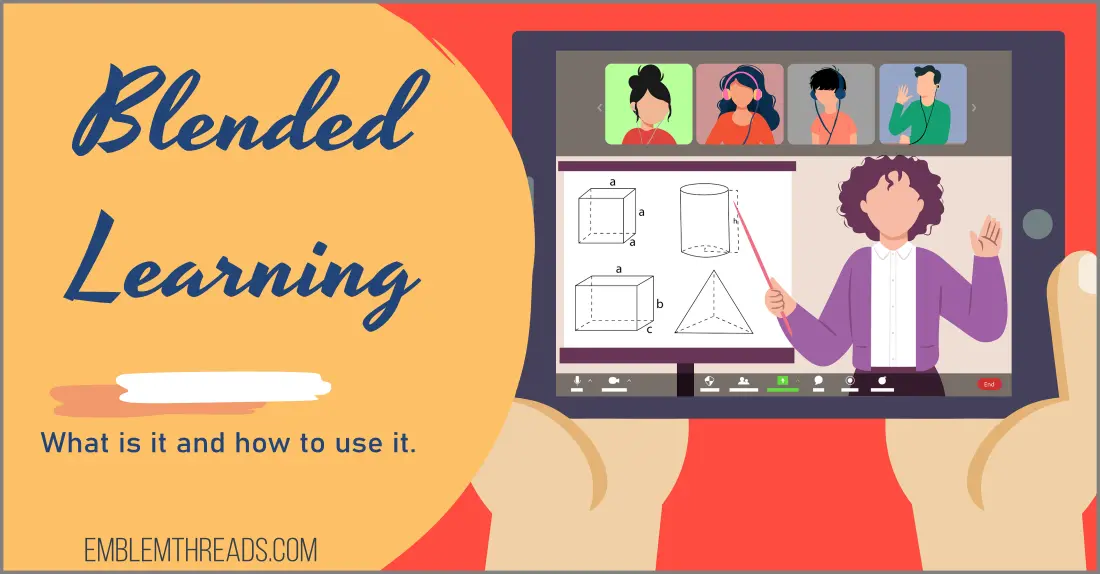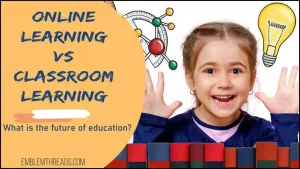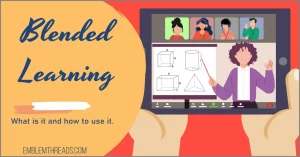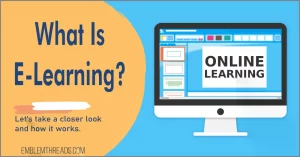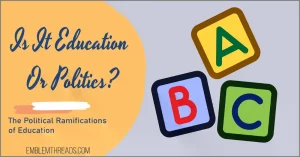Blended learning has become increasingly popular in recent years, as educators have begun to realize the potential benefits it offers students. There are several different types of blended learning, each of which can be tailored to meet the needs of your students.
In this blog post, we will discuss the different types of blended learning and how they can benefit your students.
What is Blended Learning
Blended learning is an instructional methodology and a student-centered approach that combines face-to-face with online learning.
Blended learning moves the teacher from the front of the room to the role of facilitator.
Students learn using a variety of resources including books, online activities, videos, and more. It also allows them to receive support from both teachers and classmates.
The blended learning approach allows students to work at their own pace, making it an ideal instructional model for differentiated instruction.
Blended learning also provides opportunities for students to be engaged in active learning experiences.
The blended learning research indicates that this approach leads to higher levels of student engagement and achievement. When implemented correctly, blended learning can provide a rich and engaging learning experience for all students.
Also Read: Is online learning the future?
Differences Between Cyberlearning and Blended Learning
Let’s start with the definition of cyberlearning and compare it to a blended learning model.
Cyberlearning is defined as “learning that takes place via the internet or other computer networks.”
In other words, cyberlearning uses technology and the internet to enhance a student’s learning. Interestingly, eLearning does use technology for learning but it can be done either online or offline.
So the differences can be seen as cyberlearning is more of a style of learning and blended learning uses a methodological approach to developing a learning program.
Advantages and Disadvantages to Blended Learning
There are many blended learning advantages and disadvantages, but overall it is a highly effective way of learning.
One key benefit of blended learning is that it allows students to return to the classroom with a better understanding of the material.
This is because they can take the time to review the concepts that they struggled with online, without feeling pressure from classmates or the teacher.
Another advantage is that blended learning can save schools money.
By using online resources, schools can reduce the need for textbooks, paper, and other materials. And teachers can supplement their instruction, which can save time and prepare them for class.
However, blended learning is not without its challenges.
One disadvantage is that some students may feel isolated from their classmates if they are struggling with the material. It is important that each student has a support system in place, whether that is the teacher, a tutor, or classmates.
Another challenge is that blended learning can be difficult to implement.
It requires a significant amount of planning and coordination from both teachers and administrators. Another challenge is that teachers need to be trained in how to effectively use technology in the classroom.
I wrote a whole article about online learning vs. classroom learning, including what the future of education might look like. See that article for the pros and cons of each teaching model.
Blended learning experiences can vary greatly, depending on the specific format and approach that is used. However, all blended learning environments should be designed to meet the needs of the individual learner.
Blended Learning LMS
Blended learning programs often use a Learning Management System (LMS) to deliver content and track student progress. The LMS can be used to create a flipped classroom, in which students watch video lectures at home and then complete assignments in class.
Alternatively, the LMS can be used to create a more traditional blended learning environment in which students learn both in the classroom and online.
Whatever the blended learning method, it is important that students have access to the same content and resources regardless of where they are learning.
Distance blended learning has been on the rise due largely to the COVID-19 pandemic. While blended learning was already popular among public schools, the pandemic has accelerated its adoption. Many schools have had to pivot to an entirely online model of instruction, which has not been successful for all students. As a result, many schools are now exploring blended learning as a way to provide students with both in-person and online instruction.
For a deeper dive, check out this Primer On Learning Theories by Shayan Doroudi.
Blended Learning Applications
There are many different ways to use blended learning in the classroom. Applications or models using an LMS are a given as their concepts and best practices require proper student evaluation resource delivery.
Some of the most popular applications and models are below.
Types of Blended Learning Models
There are different types of blended learning models. Each type has its own unique advantages and disadvantages.
Here are some of the most common types of blended learning:
1. Rotation Model:
In this type of blended learning, students rotate through different stations, each with a different focus.
At each station, students complete a different task. For example, at one station they might watch a video lecture while at another station they might work on a practice exercise. Or, one station might be for independent work, another might be for small-group work, and another might be for whole-group instruction.
The rotation model is a great way to differentiate instruction and meet the needs of all learners.
2. Flex Model:
The flex model is similar to the rotation model, but students are not assigned to stations. Instead, they have the flexibility to choose which activities they want to do and when they want to do them. This type of blended learning can be very effective, but it requires a lot of organization and planning on the part of the teacher.
In this model, students receive most of their instruction face-to-face but they also have the opportunity to complete some tasks online.
This model is ideal for students who learn best in a face-to-face setting but also benefit from the flexibility of online learning.
3. A LA CARTE Model:
The A La Carte Model is a type of blended learning that allows students to choose which tasks they want to complete online and which tasks they want to complete offline. This model is also known as the mix-and-match model.
For example, a student might choose to read the lesson material online but do the practice exercises offline. The A La Carte Model is flexible and allows students to tailor their learning experience to their own needs.
However, it can be difficult for teachers to create a cohesive learning experience when students are completing different tasks at different times. You can imagine the organization required to keep track of who is doing what and when. This is where a good LMS system can be very helpful.
4. Enriched Virtual Model:
The Enriched Virtual Model is another type of blended learning that combines online and offline instruction.
In this model, students receive most of their instruction online but they also have the opportunity to meet with their teacher and classmates in person. It is very much like an eLearning course that is supplemented with face-to-face meetings.
4. Flipped Classroom:
The Flipped Classroom Model is a type of blended learning that reverses the traditional model of instruction. In a flipped classroom, students watch lectures and complete assignments at home.
Then, they come to class to work on projects and participate in activities. This model allows students to learn at their own pace and go back and review concepts that they didn’t understand the first time around.
The Flipped Classroom Model is a great way to engage all students in active learning. Of course, students need some agency to complete their assigned tasks at home and on time.
How to Create a Blended Learning Program
So how does a teacher or education department create an effective blended learning program?
Remember that the goal of blended learning is to create a more personalized and engaging learning experience. This is a student-centered approach.
When done correctly, blended learning can provide students with the best of both worlds: the flexibility and customization of online learning, combined with the personal interaction and hands-on learning of offline instruction.
When creating a blended learning program, it is important to carefully consider the needs of your students and how best to meet those needs. There are a number of factors to take into account, such as the ratio of online to offline learning, the type of content that will be delivered, and the delivery format.
Once you have considered these factors, you can begin to develop your blended learning program. There are a few key steps to follow:
1. Define Goals:
Define the goals and objectives of your blended learning program. What do you hope to achieve? What skills do you want your students to develop?
2. Select The Right Mix:
Choose the right mix of online and offline learning activities. Not all content is suitable for online delivery, and some concepts are best learned through hands-on experience. By carefully selecting the activities for your blended learning program, you can ensure that your students are getting the best possible education.
For example, if your goal is to increase student engagement, you might use online forums for discussion and in-class activities that encourage hands-on learning.
3. Use Appropriate Technology:
Select the appropriate technology. The type of technology you use will depend on the activities you have chosen for your blended learning program.
For example, if you plan to use video lectures, you will need a way to record and distribute those videos. If you plan on using an LMS, you will need to select a system that is compatible with the other technology you are using.
4. Support Your Teachers:
Train your teachers. It is important that your teachers are comfortable using the technology you have chosen. They should be able to use it to deliver content, assess student progress, and give feedback.
5. Create Quality Material:
Develop or select high-quality instructional materials. This is one of the most important aspects of creating a successful blended learning program. The materials you use must be engaging and effective in order to keep your students motivated and on track.
6. Track and Assess Progress:
Finally, don’t forget to assess your students’ progress along the way. Blended learning should be flexible and adaptable, so if something isn’t working, don’t be afraid to make changes. With a little trial and error, you can create a blended learning program that works for your students and your school.
Best Practices for Blended Learning
Here is a quick list of the best practices to keep in mind for a successful blended learning program.
- Define the purpose and goals of blended learning.
- Make sure all stakeholders are on board with the program.
- Train teachers on how to effectively use technology in the classroom.
- Set up a robust and reliable technology infrastructure.
- Implement a phased approach to blended learning.
- Collect data and feedback regularly.
- Be prepared to make adjustments to the program as needed.
Rethinking the Classroom for Blended Learning
As classrooms evolve to meet the needs of 21st-century learners, blended learning has emerged as a popular instructional model.
In a blended learning environment, students can have the best of both worlds: the personal attention of a traditional classroom combined with the flexibility and independence of online learning.
However, blended learning requires a rethinking of the traditional classroom. For example, gone are the days when students sat in neat rows facing the front of the room. It is important to consider how classrooms need to be designed to accommodate this type of learning.
Instead, blended classrooms are often set up in a more collaborative format, with students working together in small groups or on projects. In addition, blended classrooms make use of technology to individualize instruction and provide students with immediate feedback.
As a result, blended classrooms can offer a more personalized and engaging learning experience for all students.
A Student-Centered Model of Blended Learning
A more student-centered learning experience is one of the main advantages of blended learning.
One of the main benefits of blended learning is that it allows students to learn at their own pace and to take an active role in their education. For example, if a student is struggling with a concept, he or she can receive additional support from the teacher or receive more time to complete an assignment.
In addition, blended learning also gives students the opportunity to learn in different ways. For instance, some students may prefer to learn through hands-on activities, while others may prefer to learn through online videos or simulations.
By offering a variety of instruction methods, blended learning provides all students with the opportunity to succeed.
Blended Learning – Summary
We’ve covered much on the topic of blended learning and how it can be an effective approach to a student-centered education style. Transforming or updating a classroom to meet the needs of modern learners can be a daunting task, but by taking a phased approach and involving all stakeholders in the process, it can be done successfully. There is much more to learn on this topic, but I hope you have gained some better insight into the world of blended learning.
Read More Related Topics:
- Online Learning vs Classroom Learning | New SolutionsOnline learning or classroom learning, is one really better than the other? Or, do we see the benefits of using both in a blended learning environment? This article will test online learning vs classroom learning… Read more: Online Learning vs Classroom Learning | New Solutions
- Blended Learning: Types and What It IsBlended learning has become increasingly popular in recent years, as educators have begun to realize the potential benefits it offers students. There are several different types of blended learning, each of which can be tailored… Read more: Blended Learning: Types and What It Is
- Gamification In eLearningThinking about introducing gamification in eLearning to make it more engaging and effective? Gamification can be used in eLearning in a few different ways. Learn more in this article. What Is Gamification in eLearning? Gamification… Read more: Gamification In eLearning
- How to Take Effective Notes: Strategies and TipsDo you wish that you could take better notes in class? Are your notes cluttered and hard to follow? Many people find it difficult to take effective notes but this is a skill that can… Read more: How to Take Effective Notes: Strategies and Tips
- What Is E-LearningWhat is e-learning? This is a question that many people have. E-learning can be defined in many ways because it covers a lot of ground. In general, e-learning is any type of learning that takes… Read more: What Is E-Learning
- Is It Education Or Politics? The Political Ramifications of EducationIt’s a question that has been asked throughout history: Is education political? What are the ramifications of having a politicized education system? In this article, we will explore the politicization of education and discuss some… Read more: Is It Education Or Politics? The Political Ramifications of Education

